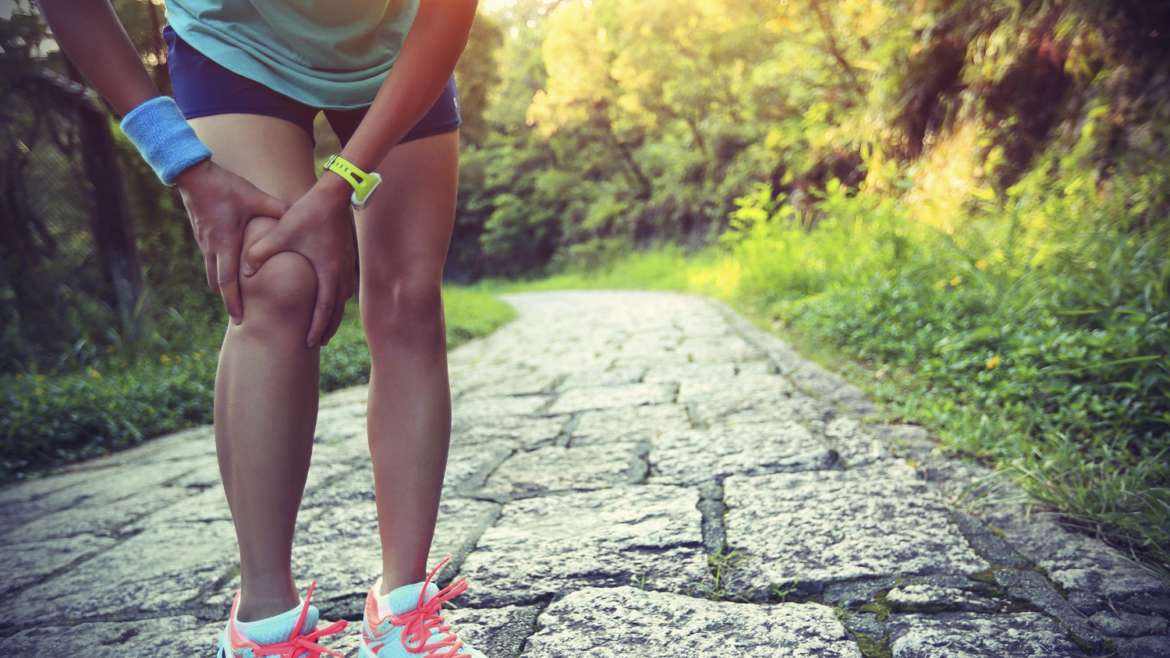Of all forms of sport, it is perhaps running that is hardest on our knees. The ongoing impact, the repetitive motions, and the ways in which many runners slip into poor posture habits all mean that knee injuries are the most common form of all for the average runner.
So commonplace are knee injuries amongst runners, that in 2009, 66% of Runners’ World survey respondents said that they had suffered an injury over the past 12 months.
Yet knee injuries are far from something that must be suffered, nor are they untreatable.

Common knee injuries
Runner’s knee (e.g. Patellofemoral pain syndrome [PFPS])
Runner’s knee is the most common of all injuries faced by runners, hence the name. This condition comes about when a miss-tracking kneecap (the patella) rubs and irritates the femoral groove, which sits on the thigh bone (the femur).
Runner’s knee can be difficult to summarise in relation to its causes – which include biomechanical issues, such as the knee cap sitting in an incorrect position or being prone to dislocation, and other causes which include worn cartilage, arched feet and knees that tend to pull sideways.
Runner’s knee maybe suffered in one or both knees. Symptoms include tenderness, pain, a feeling of cracking and a feeling that the knee may give way.
Iliotibial Band Inflammation (IBT)
The Iliotibial Band runs from the outer hip down to the knee. Injuries to this part of connective tissue are common amongst runners owing to the repetitive motion of running.
Symptoms of Iliotibial Band Inflammation include swelling and pain on the outer portions of the knee.
Meniscus/Cartilage
Meniscus/knee cartilage injuries are becoming increasingly common in runners, which may be explained by the growing average age of the typical runner. Such injuries can be associated with slips, falls or twists, as well as age-associated degeneration which can lead to the tearing of the meniscus.
Symptoms when this area of your knee is damaged include pain, swelling and a feeling that the knee may lock.
How to prevent knee injuries
Runner’s knee
Runner’s knee can be prevented by gradual training – and when suffered should see you running only on soft surfaces. It’s important to ensure that, should you feel any symptoms of runner’s knee, you reduce the ground you cover immediately and seek a professional opinion.
You can prevent this condition by ensuring that you’re running in the correct shoes (we recommend going to professional running equipment shop may provide advice). However, other than this singular step, you should give us a call for tailored advice as to how you can avoid sustaining the condition again.
Iliotibial Band Inflammation (IBT)
Iliotibial Band Inflammation can be prevented by following certain exercises that are aimed to strengthen the outer muscles (such as general quad and leg strengthening exercise). A foam roller can help with this and can ensure that the right parts of your leg are being worked.
Meniscus/Cartilage
Meniscus/Cartilage treatment and prevention very much depends on what brought about the injury in the first place. Typically rest and a switch to cross training are recommended for recovery.
Also, a common cause of knee injuries is having weak glutes, so work on strengthening these too. If you come to see us, we’ll give you specific exercises to improve your gluteal strength.
How osteopathy helps with knee injuries
Whilst there are some steps that you may take to both prevent and treat the conditions we’ve discussed, it’s important to seek medical advice when you sustain a knee injury.
Osteopathy is a commonly recommended course of action for knee injuries of all varieties – and an osteopath will be able to correctly diagnose your injury, if you weren’t already aware of it, with treatments including: soft tissue stimulation, manipulation, massage, realignment of hard tissues and, finally, the provision of advice for recovery and prevention.
Brian is our specialist sports Osteopath and has a clinic every Saturday at the Royal Arsenal. Call 020 3589 8664 to make an appointment with him.



Add Comment